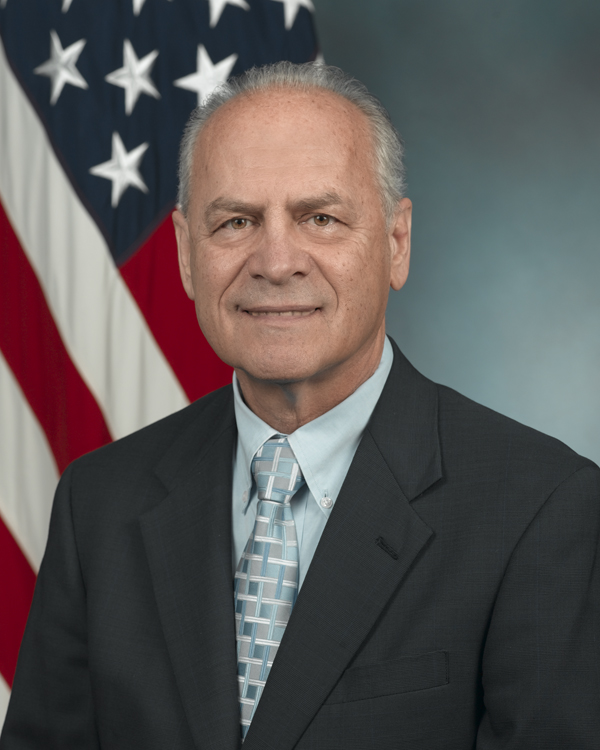
MENU
STIDS 2010 Home
About--
Topic list
Scientific Committee
Venue & Local info
Registration
Program--
Keynote Speakers
Tutorial
Agenda & Papers
Classified Workshop
Call for Papers
Important dates
Submission details
Download CFP
Proceedings
C4I
Home

SEMANTIC
TECHNOLOGY FOR
INTELLIGENCE,
DEFENSE, AND
SECURITY
Tuesday, October 26
| 09:20 - 10:00 | Registration | |
| 10:30 - 05:00 | Tutorial | |
Wednesday, October 27th
| 08:10 - 08:50 | Registration and Breakfast | ||
| 09:00 - 09:20 | Welcome by the President of GMU | ||
| 09:20 - 09:30 | Administrative remarks | ||
| 09:30 - 10:30 | Keynote Address | ||
|
Pat Hayes - Ontology Languages: the Good, the Bad and the Ugly presentation |
|||
| 10:30 - 11:00 | Break | ||
| 11:00 - 12:00 | Poster Session | ||
| 12:00 - 01:30 | Lunch | ||
| 01:30 - 03:00 | Parallel Session | ||
Research Session 1 - Chair: Brian Ulicny |
|||
| 01:30 - 02:15 |
Maintaining Temporal Perspective paper presentation |
Ian Emmons and Douglas Reid Raytheon BBN Technologies |
|
|
Abstract
We present methods for annotating data with the time when it was learned and for answering queries
according to what was known at any point in time. Specifically, we present an RDF knowledge
representation that associates facts with their time intervals of validity, and a query mechanism that
transforms a time-agnostic SPARQL query and a point in time into a new, time-sensitive query. The
transformed query yields the subset of the results of the original query that were valid at the
indicated time. In addition, the methods presented here enable non-destructive merging of coreferences.
These techniques apply broadly to storage and retrieval systems that require time-based versioning
of data and are essential for maintaining temporal perspective in rapidly- evolving analytical
environments. |
|||
| 02:15 - 03:00 |
Introducing Ontological Realism for Semi-Supervised Detection and Annotation of Operationally Significant Activity in Surveillance Videos paper presentation |
Werner Ceusters, Jason Corso, Yun Fu, Michalis Petropoulos, Venkat Krovi University at Buffalo |
|
|
Abstract
As part of DARPA's Mind's Eye program, a video-analysis software platform able to detect
operationally significant activity in videos is being developed. The goal is to describe such
activity semi-automatically in terms of verb phrases mapped to a realism-based ontology that can
be used to infer and even predict further activities that are not directly visible. We describe
how Region Connection Calculus and its derivative, Motion Class Calculus, can be used together to
link the spatiotemporal changes that pixel-aggregates undergo in video-displays to the corresponding
changes of the objects in reality that were recorded and to linguistic descriptions thereof. We
discuss how Ontological Realism can be used as a safeguard to drawing such correspondences naively. |
|||
Applications Session 1 - Chair: Mary Parmelee |
|||
| 01:30 - 02:15 |
Reified Literals: A Best Practice Candidate Design Pattern for Increased Expressivity in the Intelligence Community paper presentation |
Eric Peterson Global Infotek, Inc. |
|
|
Abstract
Reifying literals clearly increases expressivity. But reified literals appear to waste memory,
slow queries, and complicate graph-based models. We show where this practice can be comparable to
unreified literals in these respects and we characterize the cost where it is not. We offer examples
of how reification allows literals to participate in a variety of relations enabling a marked
increase in expressivity. We begin with a case study in reified person names, and then extend
this analysis to reified dates and simple reified scalar values. We show benefits for name matching
and temporal analysis such as would be of interest to the Intelligence Community (IC). We then show
how these same sorts of analyses can drive or inform any decision as to whether to reify literals. |
|||
| 02:15 - 03:00 |
Using New Standards to Develop IC Ontologies paper presentation |
Richard Lee Booz Allen Hamilton |
|
|
Abstract
In this paper we describe recent work in adapting various new OWL and ontology standards to
ontology development for the IC and DoD. We present work done to adapt the Universal Core Semantic
Layer (UCore SL) standard ontology to support intelligence analysts. We show how new features
in the OWL 2 standard can be used to make such ontologies simpler and more readable, and how they
facilitate modeling the relationships of concepts across models. We present a proposed standard
security model using OWL 2. We conclude with planned future ontology development using these standards. |
|||
| 03:00 - 03:30 | Break | ||
| 03:30 - 05:00 | Parallel Session | ||
Research Session 2 - Chair: Larry Kerschberg |
|||
| 03:30 - 04:15 |
Sample Ontological Constructs to Create Money Laundering Schemes paper presentation |
Murad Mehmet and Duminda Wijesekera George Mason University |
|
|
Abstract
There is an increasing tendency in the money laundering sector to utilize electronic commerce and
web services. Misuse of web services and electronic money transfers occurs at many points in
complex trading schemes. We provide ontological components that can be combined to construct
some of these money laundering schemes. These constructs can be helpful for investigators, in
order to decompose suspected financial schemes and recognize financial misuses. |
|||
| 04:15 - 05:00 |
Enabling Rich Discovery of Web Services by Projecting Weak Semantics from Structural Specifications paper |
Leo Obrst, Dru McCandless, Michael Bankston MITRE Corporation |
|
|
Abstract
Although we would prefer using defined ontologies that express the domains and specifications of web
services, and thus more easily discover and compose these, we know that in the mainstream world
represented by the US Department of Defense we will not have those ontologies available soon. In
the meantime we have to ensure a transition from structural to semantic methods, including web
service discovery methods. In this paper, we are proposing a different approach for dynamic web
service discovery that takes advantage of the structure inherent in web services that are defined
by WSDL documents. Since the structure is usually based on XML Schema, there is enough information
present in these documents to develop a broadly applicable approach. Furthermore, if a consistent
and detailed naming convention of schema artifacts is followed, then discovery can be made more
precise. This paper describes our approach for projecting weak semantics from structural information
for discovery of web services. |
|||
Applications Session 2 - Chair: Tim Darr |
|||
| 03:30 - 04:15 |
TIACRITIS System and Textbook: Learning Intelligence Analysis through Practice paper presentation |
Gheorghe Tecuci, Mihai Boicu, Dorin Marcu, David Schum, Learning Agents Center, George Mason University; Benjamin Hamilton Department of Defense |
|
|
Abstract
This paper presents the TIACRITIS web agent and textbook for teaching intelligence analysts
the critical thinking skills needed to perform evidence-based reasoning. They are based on a
computational theory which views Intelligence Analysis as ceaseless discovery of evidence,
hypotheses, and arguments, in a complex world that is changing all the time. TIACRITIS helps
students learn about the properties, uses, and marshaling of evidence upon which all analyses
rest, through regular practice involving analyses of evidence in both hypothetical and real
situations. |
|||
| 04:15 - 05:00 |
Semantic Wiki for Visualization of Social Media Analysis paper presentation |
Daniel Reininger, David Ihrie, and Bob Bullard Semandex Networks, Inc. |
|
|
Abstract
A semantic wiki provides visualization of social media analysis applicable to military
Information Operations and law enforcement counter- terrorism efforts. Using inputs from
disparate data sets, semantic software exports data to link analysis, geospatial displays,
and temporal representation. Challenges encountered in software development include the
balance between automated and human assisted entity extraction, interoperability with
existing visualization systems and ontology management. |
|||
| 06:00 | Social Event | ||
Thursday, October 28
| 08:30 - 09:00 | Breakfast | ||
| 09:00 - 10:00 | Keynote Address | ||
|
Dennis E. Wisnosky - Semantic Technology in the Department of Defense, Business Mission Area presentation  Dennis Wisnosky, Business Mission Area Chief Architect and CTO of the
Dennis Wisnosky, Business Mission Area Chief Architect and CTO of the Department of Defense, brings his expert guidance to the STIDS 2010 conference. Could semantic technologies, notably data constructed with RDF OWL, and capabilities delivered as services within a SOA be a new paradigm for business intelligence and business applications? Dennis will talk about the strategy, current initiatives and challenges related to the use of Semantic Technology in the DoD, and discuss the Departments early Proof of Delivery (PoD) projects designed to test the limits of both semantic technologies and the ability of the organization to use them effectively. (Bio) |
|||
| 10:00 - 10:30 | Coffee Break | ||
| 10:30 - 12:00 | Parallel Session | ||
Research Session 3 - Chair: Richard Markeloff |
|||
| 10:30 - 11:15 |
Using Ontological Information to Enhance Responder Availability in Emergency Response paper presentation |
Paul Ngo and Duminda Wijesekera George Mason University |
|
|
Abstract
Ensuring effective communications during emergencies is an important issue for any functional
government. One way to address this issue is to ensure the availability of the key personnel
capable of making the appropriate decisions and taking timely actions with sufficient resources.
Many XML-based languages such as the Emergency Data Exchange Language (EDXL) and associated
Common Alert Protocol (CAP) have been designed to provide a basis for such communications. To
ensure that messages are delivered in a timely manner, we propose some role and task based
ontological enhancements for these languages. We show by example how the ontological enhancements
can be used to enhance availability of emergency personnel in case of a need. |
|||
| 11:15 - 12:00 |
Patient-Centric Secure-and-Privacy-Preserving Service-Oriented Architecture for Health Information Integration and Exchange paper presentation |
Mahmoud Awad and Larry Kerschberg George Mason University |
|
|
Abstract
In this paper, we propose a secure and privacy-preserving Service Oriented Architecture (SOA) for
health information integration and exchange in which patients are "part owners" of their
medical records, have complete ownership of their integrated health information and decide when
and how data is modified or exchanged between healthcare providers or insurance companies. This
architecture is different from integrated Personal Health Record (PHR) such as Google Health and
Microsoft HealthVault in that electronic health records are not stored in online databases but
instead are aggregated on-demand using web service requests. Web service providers working on behalf
of the patients do not keep copies of the complete EHR but instead provide a pass- through service,
and would require PKI-based security certificates to initiate health information exchange. |
|||
Applications Session 3 - Chair: Mike Dean |
|||
| 10:30 - 11:15 |
The Application of a Course-of-Action Ontology to Support OPFOR COA Selection and Assessment paper presentation |
Timothy Darr, Richard Mayer and Perakath Benjamin Knowledge-Based Systems, Inc. |
|
|
Abstract
This paper describes the application of a course-of-action (COA) ontology to a demonstration
scenario that the authors' company participated in that included a task to forecast the COAs
to be executed by a simulated insurgent opposing force (OPFOR). The COA ontology includes
standard decision-theoretic concepts to describe preference models from the perspective of
an insurgent group for the purpose of predicting possible OPFOR COAs. The OPFOR preference
structure is represented as a preference graph that visually displays the ranking of the COAs,
from the perspective of the OPFOR decision maker, highlighting the most and least preferred COAs. |
|||
| 11:15 - 12:00 |
A Semantic Wiki Alerting Environment Incorporating Credibility and Reliability Evaluation paper presentation |
Brian Ulicny, Christopher J. Matheus, and Mieczyslaw M. Kokar VIStology, Inc. (all); Northeastern University (Kokar) |
|
|
Abstract
In this paper, we describe a system that semantically annotates streams of reports about transnational
criminal gangs in order to automatically produce models of the gangs' membership and activities in
the form of a semantic wiki. A gang ontology and semantic inferencing are used to annotate the reports
and supplement entity and relationship annotations based on the local document context. Reports in the
datastream are annotated for reliability and credibility in the proof-of-concept system. |
|||
| 12:00 - 01:30 | Lunch Break | ||
| 01:30 - 03:00 | Parallel Session | ||
Applications Session 4 - Chair: Ian Emmons |
|||
| 01:30 - 02:15 |
Collected Imagery Ontology: Semantics for Airborne Video paper presentation |
Alexander Mirzaoff Geospatial Systems ITT |
|
|
Abstract
A prototype Video Imagery Ontology has been developed to derive video imagery intelligence,
VideoIMINT. The ontology includes the development of classes and properties to address video
image content, and video collection metadata related to platforms, sensors and collection
operations. Preliminary feature extraction of video imagery content classes was functionally
utilized to identify important video segments in an integrated viewer. Integrated data
storage systems and fusion processes are proposed and discussed. |
|||
Applications Session 5 - Chair: Duminda Wijesekera |
|||
| 01:30 - 02:15 |
Toward an Ontology Architecture for Cyber-Security Standards paper presentation |
Mary C. Parmelee MITRE Corporation |
|
|
Abstract
The rapid growth in magnitude and complexity of cyber-security information and event
management (CSIEM) has ignited a trend toward security automation and information exchange
standards. Making Security Measurable (MSM) references a collection of open community
standards for the common enumeration, expression and reporting of cyber-security-related
information. While MSM-related standards are valuable for enabling security automation;
insufficient vocabulary management and data interoperability methods as well as domain
complexity that exceeds current representation capabilities impedes the adoption of these
important standards. This paper describes an Agile, ontology architecture-based approach
for improving the ability to represent, manage, and implement MSM-related standards. Initial
cross-standard analysis revealed enough common concepts to warrant four ontologies that are
reusable across standards. This reuse will simplify standards-based data interoperability.
Further, early prototyping enabled us to streamline vocabulary management processes and
demonstrate the ability to represent complex domain semantics in OWL ontologies. |
|||
| 02:15 - 02:45 | Break | ||
| 02:45 - 04:25 | Plenary Session | ||
STIDS Panel - Chair: Leo Obrst |
|||
| 02:45 - 4:10 |
Semantic Technology: Ready for prime time? |
Leo Obrst, Mike Dean, Paulo Costa, Terry Janssen, Katherine Goodier STIDS 2010 Panelists |
|
|
Abstract
There is some controversy on whether Semantic Technologies are ready to be used in support for
Intelligence, Defense, and Security applications. Each panelist will provide a brief account on
the use of ST within his or her respective area, focusing on the following issues: |
|||
| 04:10 - 04:25 |
STIDS 2011 Preview |
Paulo Costa GMU - C4I Center |
|
|
Abstract
This will be a brief plenary session in which the current status of STIDS 2011planing (e.g. dates, features, people, etc.) will be presented. Suggestions and ideas from the audience will be mostly welcomed. |
|||
| 04:25 - 04:30 | Wrap Up | ||
Friday, October 29th
| 08:30 - 05:00 | Classified Workshop | |

 (
(